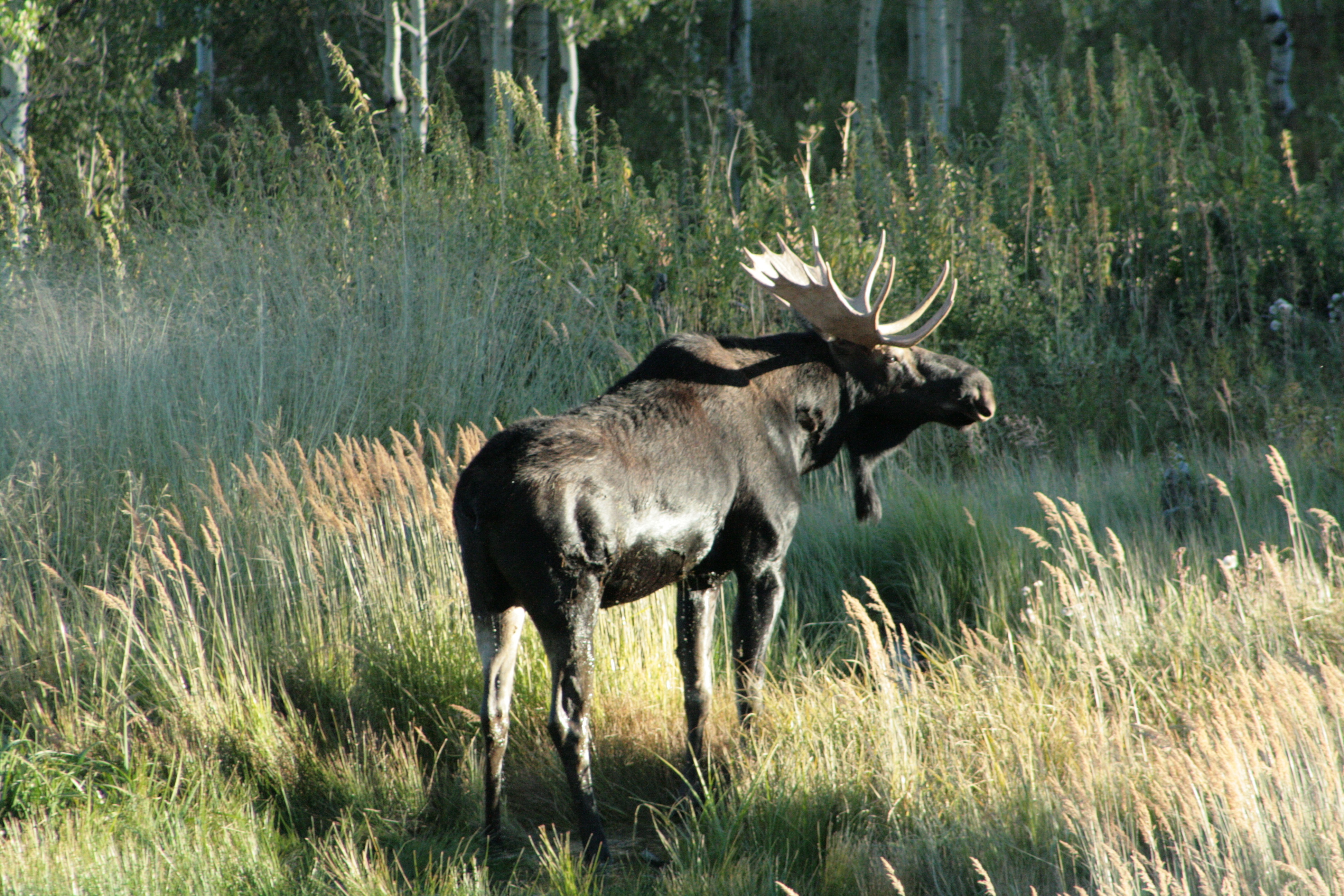We have much more to do and your continued support is needed now more than ever.
Moose Mortality: A Ghostly Tale
I am presenting for your listening ears and wondering eyes a tale most disturbing. It is a tale that will leave your skin crawling and your mind racing every time you step in from the outdoors. Fitting to the fall season, it is a ghastly tale of creatures that lurk all around, waiting in silence for an unsuspecting host to cling on to and suck the very lifeblood from their veins.
No, this tale is not one about the make-believe vampires so prevalent in our popular culture—this tale is far more insidious and oh, so very real. These creatures are not of myth or legend, but they are creepy crawly critters that haunt your worst nightmares. They live off the blood of other animals and grow more massive with each drop. They can attack en masse and leave an unsuspecting host anemic, drained and even dead. These terrible creatures of the netherworld are found across the country in growing numbers and can be as close as your own back door. Many species carry an often fatal disease in their bite, while others simply by virtue of their own demands can leave animals ailing.
Often little bigger than the tip of your pen, these small arachnids can be carriers of Lyme disease, Q fever, Colorado tick fever, Rocky Mountain spotted fever, African tick bite fever, tularemia, tick-borne relapsing fever, babesiosis, ehrlichiosis, Tick paralysis, tick-borne meningoencephalitis, and bovine anaplasmosis. If you hadn’t guessed it by now, this dreaded creature is none other than: the tick.

This particular tick does not carry the dreaded Lyme disease and feeds mainly on large animals in the deer family like moose and elk during its short active season generally attaching to their hosts in October and feasting until March or April. Their numbers have been on the rise due to milder winters in many areas of the country, which has been bad news for moose.
This is where the tale grows ghostly. Ticks have been identified in record numbers on infested moose. We’re not talking about a few hundred or even a few thousand—moose have been found to be infested with ticks numbering more than 100,000! An infestation of 40,000 ticks on a single moose can drain the equivalent of its total blood supply—32 liters of blood—in just a few short months. This feat of blood-sucking prowess causes many moose to lose their lives just trying to keep up with the subsequent anemia. In addition, moose that manage to survive the actual blood loss can more easily succumb to hypothermia or exposure as the ticks leave their bodies weak, their circulatory systems in overdrive and their bodies devoid of the precious layering of fur they need to keep themselves warm. This truly is the ghostliest of all side effects of the winter tick.
If you can and would like to imagine being covered head-to-foot in tick upon tick, you might imagine that it would make your skin crawl (even more than it already is) with little relief. Indeed, moose are so irritated by these unwelcome guests that they find themselves constantly scratchy and rubbing their bodies up against anything with the promise of momentary relief. All this friction causes their hair to snap off, leaving behind only the white roots and giving them a ghostly appearance.

Cascading Climate Change Effects
Winter ticks are largely to blame in the disappearance of thousands of moose in New Hampshire, but other climate change beneficiaries have taken out moose populations elsewhere, like brain worms and liver flukes in Minnesota, bark beetles in British Columbia that have devastated moose habitat.

Climate change itself has brought on warmer weather which can stress moose and even cause heat exhaustion and sometimes death for these animals that thrive in colder temperatures. The true effects of a changing climate on moose and other large game animals are still largely uncertain. However, despite the lack of clarity on the specific mechanisms at play, there is little doubt about the results we are already beginning to see in populations such as moose. And though the winter tick is about as dastardly and disgusting as they come, they are not the only ones taking advantage of a changing climate for their own gain.
You can read more about how climate change is affecting moose and other big game species at: www.nwf.org/sportsmen





















